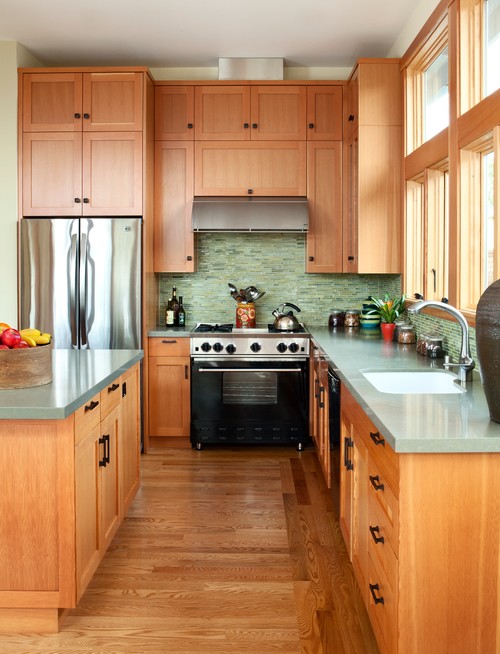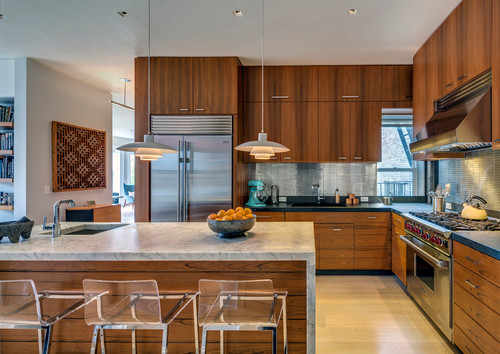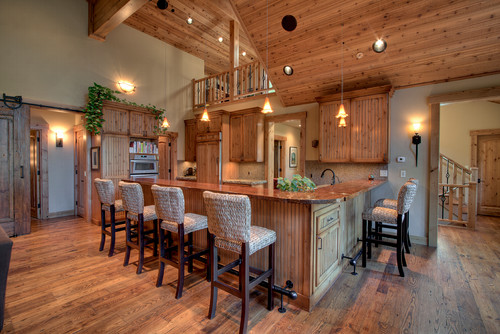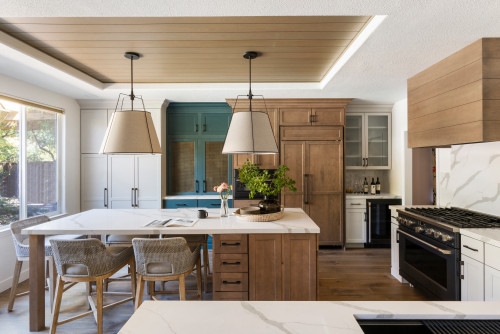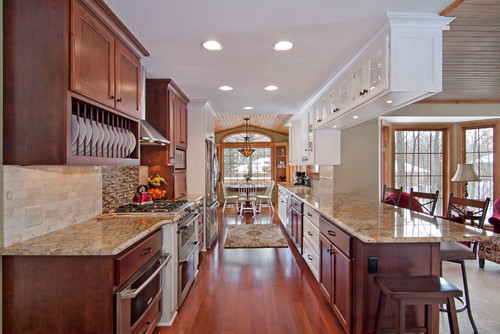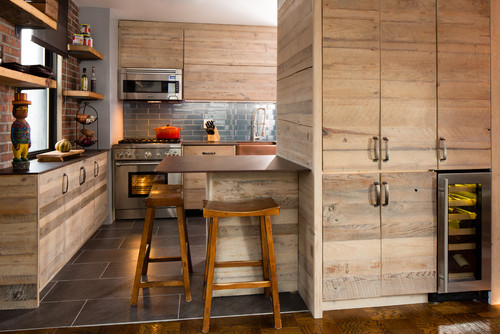Engineered Wood: The Future Of Large-Scale Construction Projects
Why engineered wood is ideal for large-scale construction projects is a crucial question in Canada, reflecting a major shift in modern architecture. This movement champions materials that are structurally superior and environmentally responsible. At rtadepot.ca, we see the versatility of engineered wood daily in creating beautiful, durable home solutions. This same innovation is now reshaping Canadian city skylines, offering a sustainable and efficient alternative. The future of construction is growing from the ground up.
1. The Ascendancy of Engineered Wood in Modern Construction
The conversation around large-scale construction in Canada is evolving. For decades, steel and concrete were the default materials for ambitious building projects. Now, a revolution is underway, led by mass timber and other engineered wood products. This is not just a trend but a response to urgent global needs for more sustainable, efficient, and intelligent construction methodologies, driven by urbanization and climate action goals. The advantages of using manufactured wood in large buildings are becoming too significant for the Canadian industry to ignore.
Engineered wood refers to derivative wood products made by binding strands, fibers, or veneers of wood with adhesives. This process creates materials with structural properties often superior to natural wood. For Canadian developers and architects, this means greater consistency, improved dimensional stability, and a strength-to-weight ratio that challenges conventional materials. The benefits of engineered wood for major building projects are now a central topic in design firms and architectural schools across Canada.
1.1. From Traditional Timber to a Technological Leap
The use of wood in construction is not new; it is one of the oldest building materials known to humanity. However, modern engineered wood represents a profound technological leap from traditional timber framing. Where solid wood had limitations in size, consistency, and structural predictability, engineered products overcome these challenges through lamination and compression. This evolution allows wood to be used in applications previously thought impossible, such as high-rise towers and long-span commercial roofs, pushing the boundaries of architectural possibility.
1.2. Defining Key Engineered Wood Products in Construction
Understanding the materials is key to appreciating their potential. In large-scale Canadian projects, several types of engineered wood are commonly used, each with specific applications that meet rigorous national standards, such as those set by the Canadian Wood Council.
- 1.Cross-Laminated Timber (CLT): CLT consists of layers of kiln-dried lumber stacked in alternating directions and bonded with structural adhesives under immense pressure. This cross-lamination provides exceptional strength and stability, making CLT panels suitable for floors, walls, and roofs. It is a cornerstone of the mass timber movement in Canada.
- 2.Glue-Laminated Timber (Glulam): Glulam is composed of several layers of dimensional lumber bonded with moisture-resistant adhesives. These are often used for impressive, long-span structural elements, including columns, beams, and arches. Their ability to be curved and shaped offers immense design flexibility, allowing for architecturally expressive structures.
- 3.Laminated Veneer Lumber (LVL): LVL is produced by bonding thin wood veneers together, with all veneers oriented in the same direction. This makes it exceptionally strong and predictable, making it a common choice for headers, beams, and rim boards in Canadian construction where high tensile strength is required.
- 4.Other Innovations: Beyond these three, materials like Nail-Laminated Timber (NLT) and Dowel-Laminated Timber (DLT) are also gaining traction. They offer simpler, often adhesive-free manufacturing processes, further enhancing the sustainable profile of mass timber construction.
2. What Are The Core Advantages Of Engineered Wood?
When considering a departure from traditional materials, Canadian stakeholders have questions. The decision to use engineered wood in a large project involves weighing its structural performance, cost-effectiveness, environmental impact, and real-world track record. At rtadepot.ca, we believe in empowering our clients with clear information. Let us explore the answers to the most pressing questions about mass timber construction in Canada.
2.1. How Strong Is Engineered Wood Compared to Steel?
Engineered wood, specifically mass timber, boasts a strength-to-weight ratio comparable to steel while being up to five times lighter than reinforced concrete. According to the latest 2025 industry data, a glulam beam can match the strength of a similarly sized steel I-beam but at a weight reduction of nearly 80%, allowing for significantly reduced foundation loads.
Superior Strength-to-Weight Ratio
The structural performance of engineered wood is a primary reason for its adoption in complex Canadian buildings. Its strength-to-weight ratio is a standout feature. Mass timber components can be up to five times lighter than concrete and steel counterparts of the same strength. This reduced weight lessens the load on a building’s foundation, potentially reducing foundation size and cost, a major consideration for urban construction in cities like Toronto or Vancouver.
Excellent Seismic Resilience
Furthermore, engineered wood exhibits excellent performance under seismic loads. The flexibility of wood, combined with modern connections, allows timber structures to dissipate energy from earthquakes effectively. A landmark test on a full-scale 10-story mass timber building showed it could endure simulated earthquakes with minimal damage. This resilience is a critical factor for projects in seismically active zones within Canada, making engineered wood a safe and reliable choice.
High Thermal and Acoustic Performance
Beyond sheer strength, engineered wood provides superior thermal insulation compared to steel and concrete. This natural insulating property reduces thermal bridging and contributes to a more energy-efficient building envelope. This can lead to significant long-term savings on heating and cooling costs, a major advantage given Canada’s diverse climate. The cellular structure of wood also provides natural acoustic dampening, creating quieter and more comfortable interior spaces for occupants.
2.2. How Does Engineered Wood Compare to Steel and Concrete for Large Projects?
A direct comparison reveals why engineered wood is such a compelling alternative for Canadian projects. While material costs vary, the overall project timeline and logistics often favor wood. The advantages of mass timber in commercial construction are multifaceted. For Canadian developers, this comparison is crucial for budgeting and planning.
The efficiency gained through prefabrication can shorten construction schedules significantly, a major benefit in the Canadian market where building seasons can be limited by weather. Using engineered wood can accelerate project completion and reduce exposure to risks associated with prolonged on-site work.
2.3. What Is Engineered Wood’s Biggest Environmental Advantage?
The primary environmental benefit is carbon sequestration. A typical 12-story mass timber building can sequester approximately 3,100 metric tons of CO2, which is equivalent to removing over 670 gasoline-powered cars from the road for a year. This turns the building into a carbon sink, directly combating climate change, a sharp contrast to the emissions-heavy production of steel and concrete.
The environmental case for engineered wood is powerful. As Canada works towards its climate goals, the construction industry is under pressure to decarbonize. Engineered wood offers a clear path forward. Trees absorb and store carbon; when this wood is used in a building, that carbon is locked away for the life of the structure. This process is known as carbon sequestration.
This benefit is amplified when the wood is sourced from sustainably managed forests. In Canada, certifications from the Forest Stewardship Council (FSC) and Sustainable Forestry Initiative (SFI) ensure that timber is harvested responsibly, protecting biodiversity and forest ecosystems. A full lifecycle assessment (LCA) shows that engineered wood has far lower embodied energy than its mineral-based counterparts, making it a truly green choice from cradle to grave.
2.4. The Human Element: Biophilia and Well-being
Beyond the environmental metrics, engineered wood offers a unique benefit: it enhances the well-being of building occupants. The concept of biophilic design suggests that humans have an innate tendency to seek connections with nature. Incorporating natural elements like exposed wood into our built environments can reduce stress, improve cognitive function, and enhance creativity.
Numerous studies have supported this connection. Research has shown that office environments with exposed wood features lead to higher levels of employee satisfaction and productivity. In healthcare settings, patients in rooms with wood accents have reported lower levels of stress and faster recovery times. This makes engineered wood not just a structural material, but a tool for creating healthier, more humane spaces in our increasingly urbanized Canadian cities.
2.5. Are There Case Studies of Large Buildings Constructed With Engineered Wood?
The benefits of engineered wood are being proven in skylines across Canada and the world. One of the most famous examples is the Brock Commons Tallwood House at the University of British Columbia in Vancouver, Canada. Completed in 2017, this 18-story student residence was a global benchmark.
Its structure was completed in just 66 days, showcasing the incredible speed of prefabricated CLT and glulam construction. This project served as a powerful proof-of-concept for the Canadian building industry, demonstrating that engineered wood is a viable material for tall, urban structures. It remains a key case study for architects and developers.
Another prominent Canadian example is the 10-story, 77,000-square-foot Wood Innovation and Design Centre in Prince George, British Columbia. It was one of North America’s tallest contemporary wood buildings at its completion, demonstrating the potential of mass timber for institutional and office use. Internationally, projects like the 85.4-meter Mjøstårnet in Norway and the 84-meter HoHo Tower in Vienna continue to push the vertical limits of engineered wood construction.
3. The Practical Implementation: A New Era of Building
Shifting to engineered wood involves a different approach to construction, emphasizing precision and efficiency. This modern method brings significant practical advantages to a building site in Canada. Mass timber’s role in large-scale developments is defined by its ability to streamline complex operations, saving time and money.
3.1. The Digital Workflow: BIM and Precision Manufacturing
The success of a mass timber project begins long before the first component arrives on-site. It starts with a highly detailed digital workflow using Building Information Modeling (BIM). Architects and engineers create a precise 3D model of the entire structure. This model is then sent directly to the engineered wood fabricator’s CNC (Computer Numerical Control) machines.
This digital-to-fabrication process ensures that every beam, column, and panel is manufactured to sub-millimeter accuracy, with all openings for doors, windows, and mechanical systems pre-cut. This level of precision eliminates the costly and time-consuming on-site adjustments that are common in traditional construction, ensuring a seamless fit and faster assembly.
3.2. The Prefabrication Advantage: Speed, Quality, and Safety
The most significant operational benefit of engineered wood is its suitability for prefabrication. Large components are manufactured in a controlled factory environment. This approach moves much of the construction work off-site, reducing the impact of weather delays, a key factor in Canada. It also leads to a safer work environment, as many of the most hazardous tasks are performed in a controlled setting.
When finished components arrive, they are ready for immediate erection, often with a smaller crew than required for a steel or concrete frame. This plug-and-play system drastically reduces the construction timeline. This acceleration leads to significant savings in labor costs, financing, and site overhead, making engineered wood an economically smart choice.
3.3. Transforming the Construction Site
A mass timber construction site is remarkably different. It is significantly quieter, as the primary activities are assembly and connection. The lighter weight of the materials means that smaller, more energy-efficient cranes can be used. This makes engineered wood a more community-friendly construction choice, especially in dense Canadian city centers.
Furthermore, prefabrication leads to a dramatic reduction in on-site waste. Components are manufactured to size, all but eliminating the need for on-site cutting and the associated debris. The number of truck deliveries is also reduced, easing traffic congestion and pollution in the surrounding urban environment.
3.4. Addressing Common Concerns: Fire, Moisture, and Durability
Misconceptions about wood construction persist, but modern engineered wood products are designed to meet rigorous Canadian building codes. Large mass timber elements perform very well in a fire. The outer layer of the wood burns at a slow, predictable rate, forming a layer of char that acts as an insulator, protecting the structural wood within.
Like any building material, engineered wood must be protected from prolonged exposure to moisture. This is managed through proper design and the use of weather-resistant barriers during construction. When designed and built correctly, a mass timber building is just as durable and long-lasting as its concrete or steel counterparts. Modern acoustic assemblies also ensure that sound transmission between units meets or exceeds the requirements for high-quality residential and commercial spaces.
4. The Financial Case for Large-Scale Engineered Wood Projects
Financial viability is paramount for any large-scale construction project in Canada. The economic arguments for engineered wood are compelling, focusing on total project cost and long-term value rather than just upfront material expenses.
4.1. Beyond Material Costs: Understanding Total Project Savings
The real financial savings of using engineered wood are realized through the construction process. The significant reduction in construction time translates directly into major savings on labor costs, equipment rentals, and construction financing interest. The building becomes operational sooner, allowing the owner to begin generating revenue earlier, a clear advantage in the competitive Canadian market.
The lighter weight of an engineered wood structure also reduces the size and cost of the foundation, one of the most expensive parts of a project. These combined savings in time and foundational work can make mass timber a more cost-effective choice overall, even if the raw material costs are comparable to steel or concrete.
4.2. Long-Term Value and Enhanced Building Performance
The benefits of engineered wood continue long after construction. The natural insulating properties of wood contribute to better thermal performance, reducing a building’s heating and cooling costs. The precision of prefabrication also leads to a tighter building envelope, further enhancing energy efficiency.
There is also a growing market demand in Canada for sustainable buildings with biophilic design, which can translate into higher rental rates and long-term value. As governments introduce carbon taxes and incentives for green building, the low-carbon nature of engineered wood will become an even greater financial asset, making it a future-proof investment.
5. From City Skylines to Your Home: The Universal Appeal of Engineered Wood
The principles that make engineered wood ideal for large-scale construction—strength, sustainability, and efficiency—are the same qualities that make it perfect for your home project in Canada. While the scale is different, the challenges are often the same. You want a space that is not only beautiful but also organized, durable, and a reflection of a modern, thoughtful lifestyle.
Many Canadian homeowners face the frustration of an outdated kitchen with inefficient storage. They struggle with clutter that disrupts the sense of peace in their home. The search for high-quality, customized solutions that do not carry an exorbitant price tag can be a significant hurdle. This struggle to balance quality, aesthetics, and budget is a common story.
This is where the intelligence of engineered wood provides the perfect answer. The same precision manufacturing that creates skyscraper components is used to craft superior cabinetry. At rtadepot.ca, a proud Canadian company, we specialize in harnessing the power of high-quality engineered wood to create exceptional cabinetry solutions that transform your home. We provide the tools to help you optimize storage and upgrade your living space.
Are you ready to solve the challenges of your current space? Imagine a kitchen that is a joy to cook in, with smart storage that makes organization effortless. Let our team of Canadian design experts guide you. We provide personalized consultations to help you select the perfect style and layout.
Do not let an inefficient space hold you back. Take the first step towards the organized, beautiful home you deserve. Call our dedicated hotline at +1 888 973 5636 for a no-obligation consultation. Visit us at https://www.rtadepot.ca/ to explore our engineered wood solutions. Let us help you build your dream, one cabinet at a time.


